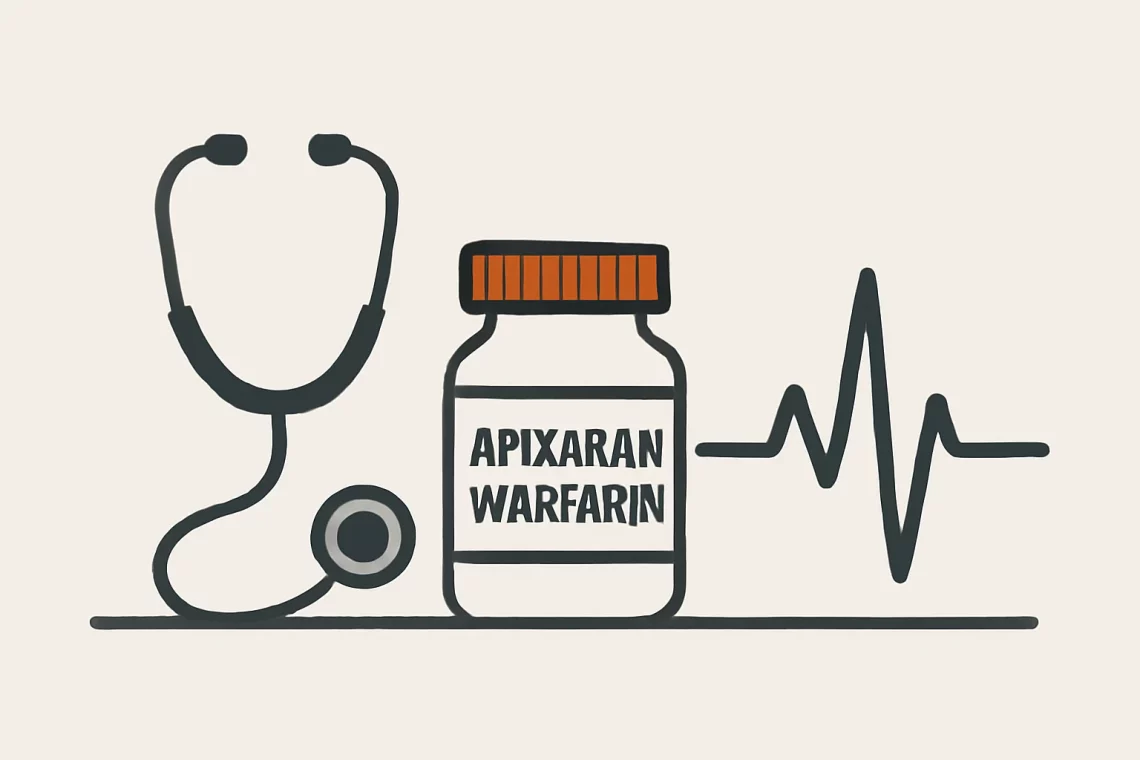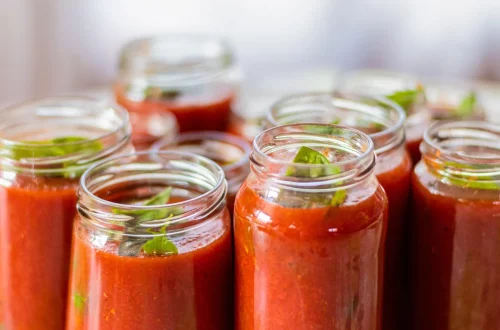-
Apixaban vs Warfarin: Choosing the Right Anticoagulant for You
Apixaban and warfarin are two anticoagulant medications commonly prescribed to prevent blood clots and reduce the risk of stroke in patients with certain medical conditions, such as atrial fibrillation and deep vein thrombosis. Both drugs serve the same primary purpose, yet they operate through different mechanisms and possess distinct characteristics that influence their use in clinical practice. Understanding the nuances between these two medications is essential for patients and healthcare professionals alike, as it can significantly impact treatment outcomes and overall patient safety. Anticoagulation therapy is pivotal in managing conditions associated with thromboembolic events. As healthcare continues to evolve, the choice between apixaban and warfarin has become a topic of…
-
Cephalexin or Amoxicillin Which Antibiotic is Right for You
The use of antibiotics has become a cornerstone in modern medicine, providing effective treatment options for a variety of bacterial infections. Among the numerous antibiotics available, Cephalexin and Amoxicillin are two commonly prescribed medications. Both belong to the broader class of beta-lactam antibiotics, but they each have unique properties, indications, and mechanisms of action that can influence their effectiveness depending on the specific infection being treated. The choice between Cephalexin and Amoxicillin can be crucial in ensuring optimal patient outcomes while minimizing the risk of antibiotic resistance—a growing concern in the medical community. Understanding the differences between these two antibiotics, including their spectrum of activity, side effects, and potential interactions,…
-
Quetiapine vs Aripiprazole: Which Antipsychotic Is Right for You?
Quetiapine and aripiprazole are two widely used medications in the field of psychiatry, known for their roles in treating various mental health disorders. As mental health awareness continues to grow, understanding the distinctions and similarities between these two medications becomes increasingly important for patients and caregivers alike. Both drugs belong to the class of atypical antipsychotics, but they have unique mechanisms of action, side effect profiles, and indications that can influence treatment outcomes. Quetiapine, marketed under the brand name Seroquel, is often prescribed for conditions such as schizophrenia, bipolar disorder, and major depressive disorder, especially in cases where traditional antidepressants may not be effective. On the other hand, aripiprazole, known…
-
Clonazepam vs Klonopin: Understanding Their Differences and Uses
Clonazepam and Klonopin are often mentioned interchangeably in discussions related to anxiety and seizure disorders. However, despite their similarities, they possess unique characteristics that can significantly influence their use in medical practice. Clonazepam is the active ingredient in Klonopin, a well-known brand name for this medication. As a benzodiazepine, Clonazepam functions by enhancing the effects of a neurotransmitter in the brain called gamma-aminobutyric acid (GABA). This action leads to its sedative, anxiolytic, and anticonvulsant effects. The complexity of benzodiazepines, including Clonazepam and its branded counterpart, extends beyond their pharmacological profiles. Understanding their uses, potential side effects, and the nuances in their application can empower patients and caregivers to make informed…
-
Rivaroxaban vs Apixaban: Choosing the Right Anticoagulant for You
Rivaroxaban and apixaban are two widely used anticoagulant medications that play a crucial role in the management of thromboembolic disorders. As blood thinners, they help prevent the formation of harmful blood clots that can lead to serious conditions such as stroke, deep vein thrombosis, and pulmonary embolism. The increasing prevalence of cardiovascular diseases, along with the aging population, has led to a greater demand for effective anticoagulant therapies. Both medications belong to a class of drugs known as direct oral anticoagulants (DOACs), which have gained popularity due to their favorable safety profiles and ease of use compared to traditional anticoagulants like warfarin. Patients often face the dilemma of choosing between…
-
Tramadol vs Diclofenac: Understanding Pain Relief Options
Tramadol and diclofenac are two commonly used medications that serve distinct purposes in pain management. While both drugs are effective in alleviating discomfort, their mechanisms of action, side effects, and appropriate usage differ significantly. Understanding these differences can help individuals make informed decisions about their pain management options. Tramadol is an opioid analgesic, which means it works on the central nervous system to alleviate pain. It is often prescribed for moderate to severe pain and can be used in various conditions, from post-surgical pain to chronic pain disorders. On the other hand, diclofenac is a non-steroidal anti-inflammatory drug (NSAID) that primarily reduces inflammation and alleviates pain related to conditions such…
-
Eliquis vs Xarelto Which Anticoagulant is Right for You
Anticoagulants play a crucial role in modern medicine, especially for patients at risk of developing blood clots. Two of the most commonly prescribed anticoagulants are Eliquis (apixaban) and Xarelto (rivaroxaban). Both medications belong to a class of drugs known as direct oral anticoagulants (DOACs) and are used to reduce the risk of stroke and blood clots in patients with conditions such as atrial fibrillation or venous thromboembolism. The choice between Eliquis and Xarelto can be a significant decision for both patients and healthcare providers. Factors such as efficacy, safety profiles, dosing regimens, and potential drug interactions must be considered. Each medication has its unique characteristics that can influence treatment decisions…
-
Meloxicam vs Relafen: Which Pain Relief Option is Right for You?
Meloxicam and Relafen are two medications often prescribed for the treatment of pain and inflammation associated with various conditions, including arthritis and other musculoskeletal disorders. Both drugs belong to the class of nonsteroidal anti-inflammatory drugs (NSAIDs), which are commonly used to alleviate discomfort and improve quality of life for individuals suffering from chronic pain. While they serve similar purposes, there are distinct differences in their mechanisms of action, effectiveness, side effects, and usage guidelines that can influence a patient’s choice of treatment. Understanding these differences is crucial for both healthcare providers and patients in making informed decisions about pain management. With the rising awareness of the importance of personalized medicine,…
-
Metoprolol vs Propranolol: Key Differences and Uses Explained
Metoprolol and propranolol are two widely prescribed medications belonging to the class of drugs known as beta-blockers. These medications are primarily used to manage various cardiovascular conditions, such as hypertension, angina, and arrhythmias. However, their mechanisms of action, therapeutic applications, and side effect profiles differ significantly, making them suitable for different patient needs. Understanding these differences is crucial for both healthcare professionals and patients, as it can influence treatment efficacy and safety. Beta-blockers work by blocking the effects of adrenaline on beta-adrenergic receptors, leading to a decrease in heart rate and blood pressure. This class of drugs is beneficial not only for heart-related issues but also for other conditions such…
-
Propranolol vs Atenolol Which Beta Blocker is Right for You
Propranolol and atenolol are both medications belonging to a class known as beta-blockers. These drugs are commonly prescribed for various cardiovascular conditions, including hypertension, angina, and arrhythmias. Beyond their primary uses, beta-blockers have gained attention for their effectiveness in managing anxiety and migraine prophylaxis. As they work by blocking the effects of adrenaline on the beta-adrenergic receptors, they can significantly reduce heart rate and lower blood pressure, leading to improved overall cardiovascular health. Despite their similarities, propranolol and atenolol differ in their specific mechanisms of action, side effects, and therapeutic applications. Understanding these differences can help patients and healthcare providers make informed decisions about which medication is best suited for…







































